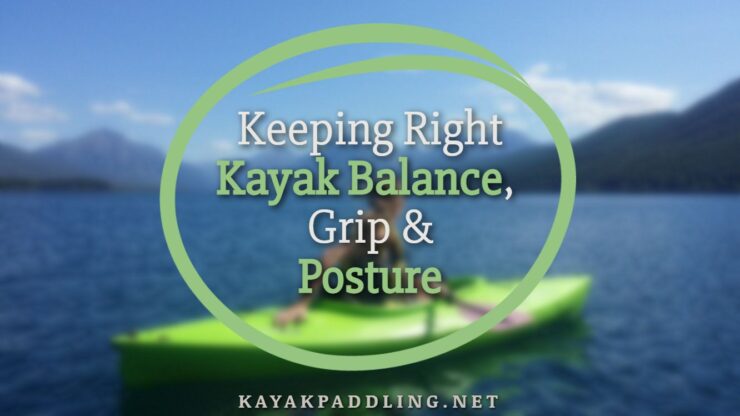Kayaking is a rewarding water sport, a fantastic way to connect with nature, and an excellent full-body workout. The way you balance, grip your paddle, and maintain posture plays a crucial role in your kayaking experience. Here’s a comprehensive guide on how to enhance your kayaking experience with the right balance, grip, and posture.
Table of Contents
ToggleKayak Balance
Balancing a kayak might seem daunting for beginners, but it is a fundamental skill that you can master with practice and the right techniques. Proper balance reduces the risk of capsizing and allows you to navigate through the waters smoothly.
Importance
Balance in kayaking is more than just staying upright; it is about distributing your weight evenly, allowing the kayak to move freely and respond effectively to your paddle strokes. Poor balance can lead to a lack of control, making the kayak susceptible to tipping over, especially in turbulent waters.
Mastering Balance
Mastering balance requires a combination of proper seating, weight distribution, and practicing balance drills. When seated, your back should be straight, and your weight should be evenly distributed on both sides of the kayak. Practicing in calm waters, focusing on maintaining balance in varying positions, can significantly enhance your balancing skills.
Techniques for Maintaining Balance
Knowing the techniques to maintain balance is crucial. They not only prevent the kayak from tipping over but also make paddling efficient.
Lower Body Balance
The lower body plays a vital role in maintaining balance. Keep your legs comfortably against the kayak’s sides and your feet resting on the footpegs. Your knees should have a slight bend, allowing for effective weight transfer from one side to the other, which is essential for making quick, balanced maneuvers.
Upper Body Balance
Upper body balance is equally important. Maintaining an upright posture, keeping your head centered above your body, and avoiding abrupt movements help in maintaining stability. Practicing keeping the upper body still while moving the kayak with paddle strokes will fortify your upper body balance.
Kayak Grip
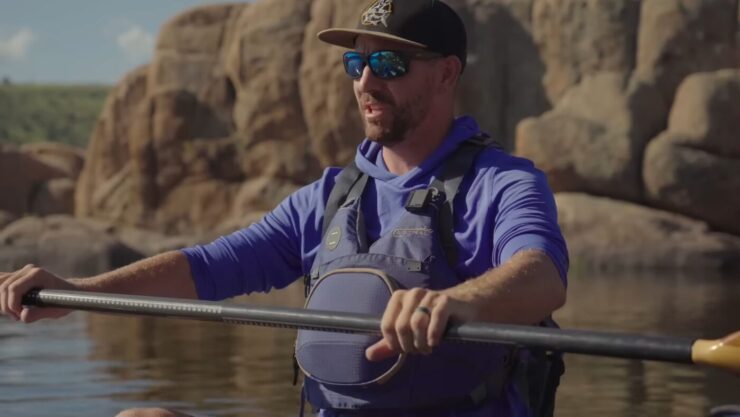
Understanding the correct way to grip your paddle can significantly impact your kayaking experience. A right grip helps in maximizing stroke efficiency, reducing fatigue, and maintaining control of the kayak.
Optimal Paddle Grip
Holding the paddle with an optimal grip involves:
- Hands Placement: Place your hands shoulder-width apart, ensuring an equal distance from both blade ends.
- Knuckles Alignment: Align your knuckles with the edge of the blade to maintain the correct blade angle.
- Grip Pressure: Avoid gripping the paddle too tightly; a relaxed grip reduces forearm fatigue and allows for smooth, efficient strokes.
Grip Adjustments
Adapting your grip is crucial, especially in changing water conditions. In turbulent waters, a firmer grip gives better control. For long distances, a relaxed grip is preferable to avoid straining your hands and wrists. Frequent adjustments and practicing different grip pressures can significantly enhance your paddling endurance and control.
Choosing the Right Paddle
A suitable paddle is just as important as the right grip, and choosing one can significantly influence your kayaking comfort and efficiency.
Paddle Length
Choosing the right paddle length is crucial. A too-long paddle can make your strokes inefficient and tiring, while a too short paddle will force you to lean forward, impacting your posture and balance. To find the right length, consider your height, the width of your kayak, and your paddling style.
Paddle Material and Blade Shape
The material and blade shape of a paddle also play essential roles. Lighter materials like carbon fiber are preferable for long distances, while more robust materials like polypropylene are suitable for rough conditions. A narrow blade offers less resistance and is ideal for long trips, whereas a wide blade provides more power and is suitable for fast, aggressive paddling.
Kayak Posture
Proper posture in a kayak isn’t just about sitting up straight; it’s about aligning your body correctly to optimize paddle strokes, enhance balance, and reduce the strain on your back and shoulders.
Optimal Seating Position
Sit with your back straight and against the seat back, your knees slightly bent, and your feet resting comfortably on the footpegs. Your torso should rotate with each stroke, allowing for longer, more powerful, and more efficient strokes while reducing the strain on your lower back.
Maintaining Posture
Maintaining correct posture for extended periods can be challenging. Regular breaks, stretching, and adjusting your seating position can help in preventing stiffness and discomfort. Building core strength through exercises like planks and sit-ups can also contribute significantly to maintaining posture during kayaking.
Benefits of Correct Posture
Maintaining correct posture not only ensures a comfortable kayaking experience but also brings several other benefits.
Enhanced Performance
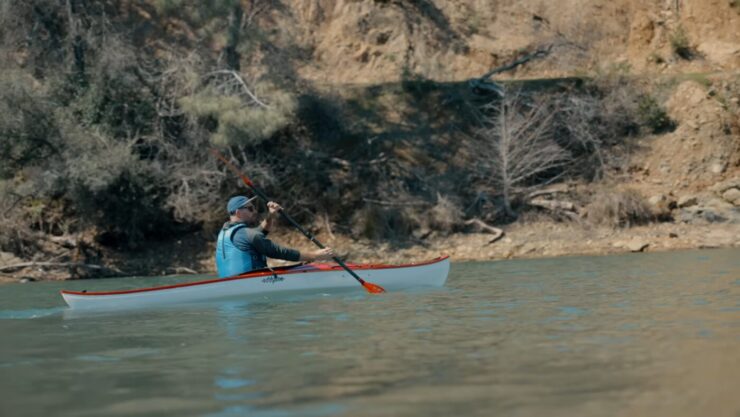
Correct posture allows for optimal body movement, enabling more powerful and efficient paddle strokes, thus improving overall performance. It also helps in maintaining better balance and control of the kayak, which is essential for maneuvering through challenging water conditions.
Injury Prevention
Correct alignment of the spine and efficient body movements reduce the risk of strain and injuries to the back, shoulders, and neck.
It’s crucial to be mindful of maintaining proper posture, especially during long kayaking trips, to avoid any potential health risks associated with poor posture.
Enhancing Your Kayaking Skills
Continually refining and enhancing your kayaking skills is crucial. It helps in adapting to different water conditions, improving performance, and ensuring a safer kayaking experience.
Learning Advanced Techniques
Advanced techniques like edging, bracing, and rolling are essential skills for experienced kayakers. Edging helps in turning the kayak more efficiently, bracing prevents capsizing in turbulent waters, and rolling is a self-rescue technique to upright the capsized kayak.
Regularly practicing these advanced techniques can significantly enhance your kayaking proficiency.
Conditioning and Training
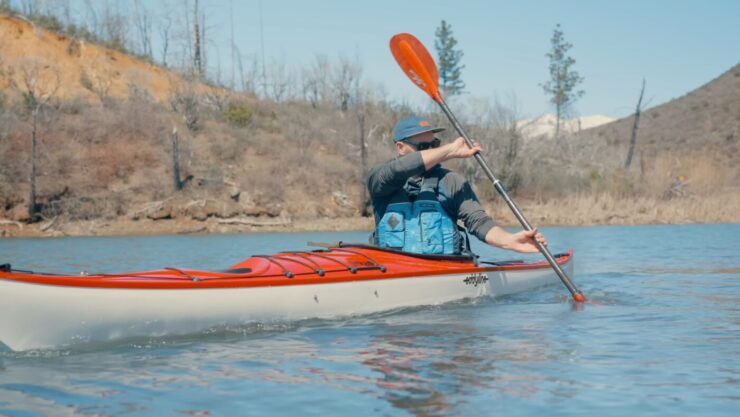
Physical conditioning and training are indispensable for improving kayaking skills. Developing strength, endurance, flexibility, and balance through regular workouts and specific exercises can dramatically improve paddling efficiency, reduce fatigue, and enhance overall kayaking performance.
Staying Informed and Prepared
Before embarking on a kayaking adventure, being well-informed about the water conditions and well-prepared with the necessary gear and skills is crucial.
Water Conditions
Knowledge of the water conditions you’ll be navigating is essential:
- Water Currents and Tides: Understanding the water flow helps in planning your route and exerting the right amount of force during paddling.
- Weather Conditions: Being aware of the weather can help you avoid adverse conditions and ensure a safer kayaking experience.
- Water Temperature: Knowing the water temperature is crucial to dress appropriately and be prepared for any potential hazards.
Carrying Essential Gear
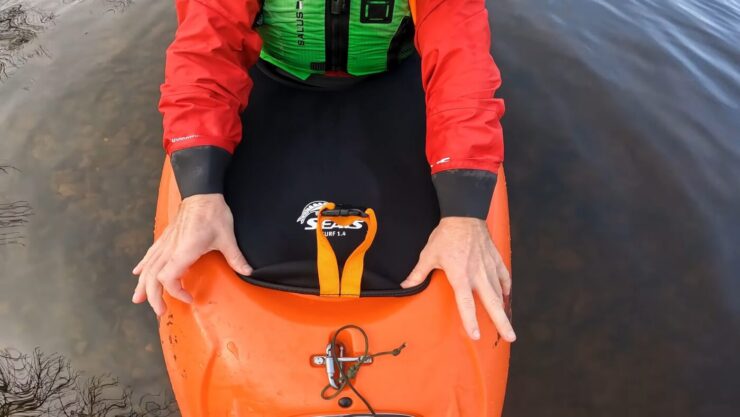
Carrying the right gear is equally important. Essential gear includes:
- Personal Floatation Device (PFD): It is a mandatory piece of equipment to ensure your safety on the water.
- Helmet: A quality helmet is crucial for protecting your head, especially in rough water conditions.
- Spray Skirt: It helps in keeping the water out of the kayak, which is essential for maintaining balance and preventing capsizing in turbulent waters.
FAQs
How often should I practice kayaking as a beginner to become proficient?
As a beginner, aim to practice kayaking at least two to three times a week, gradually increasing the duration and intensity of your sessions. Regular, consistent practice is more effective for building proficiency than sporadic, intense sessions.
As you become more comfortable, you can start practicing advanced techniques and exploring different water conditions.
Is it necessary to take kayaking lessons, or can I learn on my own?
While it’s possible to learn kayaking on your own, especially with the plethora of online resources available, taking lessons from a certified instructor is highly recommended. Lessons provide structured learning, immediate feedback, and hands-on experience, which can accelerate your learning process and help you avoid developing bad habits.
Moreover, instructors can teach essential safety procedures and rescue techniques, ensuring a safer kayaking experience.
Can I practice kayaking balance and posture exercises out of the water?
Yes, several dry land exercises can help improve your balance and posture for kayaking. Balance boards, stability balls, and yoga are excellent for developing balance and core strength, which are essential for maintaining stability in a kayak.
Similarly, seated rotational exercises and practicing proper sitting posture can help in mimicking and reinforcing the right posture needed during kayaking.
How should I maintain my kayak to ensure it stays balanced and performs well?
Regular maintenance is crucial for keeping your kayak in optimal condition. Inspect your kayak before each use for any damage, loose fittings, or wear and tear, and address any issues promptly. Clean the kayak thoroughly after each use to remove sand, salt, and debris, and store it in a cool, dry place, away from direct sunlight, to prevent material degradation.
Periodically check and adjust the footpegs and seat to ensure they are in the right position, contributing to better balance and posture.
Are there specific workouts I can do to improve my kayaking skills?
Yes, incorporating a mix of cardio, strength, flexibility, and balance exercises can significantly improve your kayaking skills. Cardio workouts like swimming, running, and cycling enhance endurance. Strength training focusing on the core, upper body, and lower body improves paddling power and stability.
Flexibility exercises like yoga and stretching aid in preventing injuries and improving overall body movement. Balance exercises like single-leg stands and balance board exercises enhance stability in the kayak.
Can I go kayaking if I don’t know how to swim?
While knowing how to swim is highly recommended for safety reasons, non-swimmers can also go kayaking. It is crucial, however, to wear a well-fitted personal flotation device (PFD) at all times, stay in shallow and calm waters, and preferably be accompanied by experienced kayakers or instructors.
Additionally, informing fellow kayakers of your swimming ability allows them to take extra precautions to ensure your safety.
Final Words
Achieving the right balance, grip, and posture in kayaking is fundamental for an enjoyable and safe kayaking experience. Mastering these elements not only improves your performance but also safeguards you against potential injuries and discomfort.
Whether you are a beginner or a seasoned kayaker, continually refining your skills and techniques in these areas is essential for unlocking your full kayaking potential. Keep practicing, stay mindful of your body movements, and enjoy the waters safely!
Adelaide Gentry, a seasoned kayaking enthusiast and expert, is the driving force behind KayakPaddling.net. With over a decade of experience navigating the world’s most challenging waterways, Adelaide combines her passion for adventure with a deep knowledge of kayaking to provide insightful and practical guidance for paddlers of all levels.
Related Posts:
- 16 Best Kayak For Beginners 2024 - Kayaking Adventure Gear
- Heavy Duty Fishing: 11 Best Rods And Reels For Big Fish 2024
- 10 Best Inflatable Kayak 2024 - Rivers, Lakes & Open Seas
- 12 Best Motorized Kayak 2024 - Start Your Aquatic Adventure!
- 10 Best Kayaks For Camping 2024 - Lightweight and…
- 10 Best Fish Finders Under $200 2024 - Top Affordable Picks

